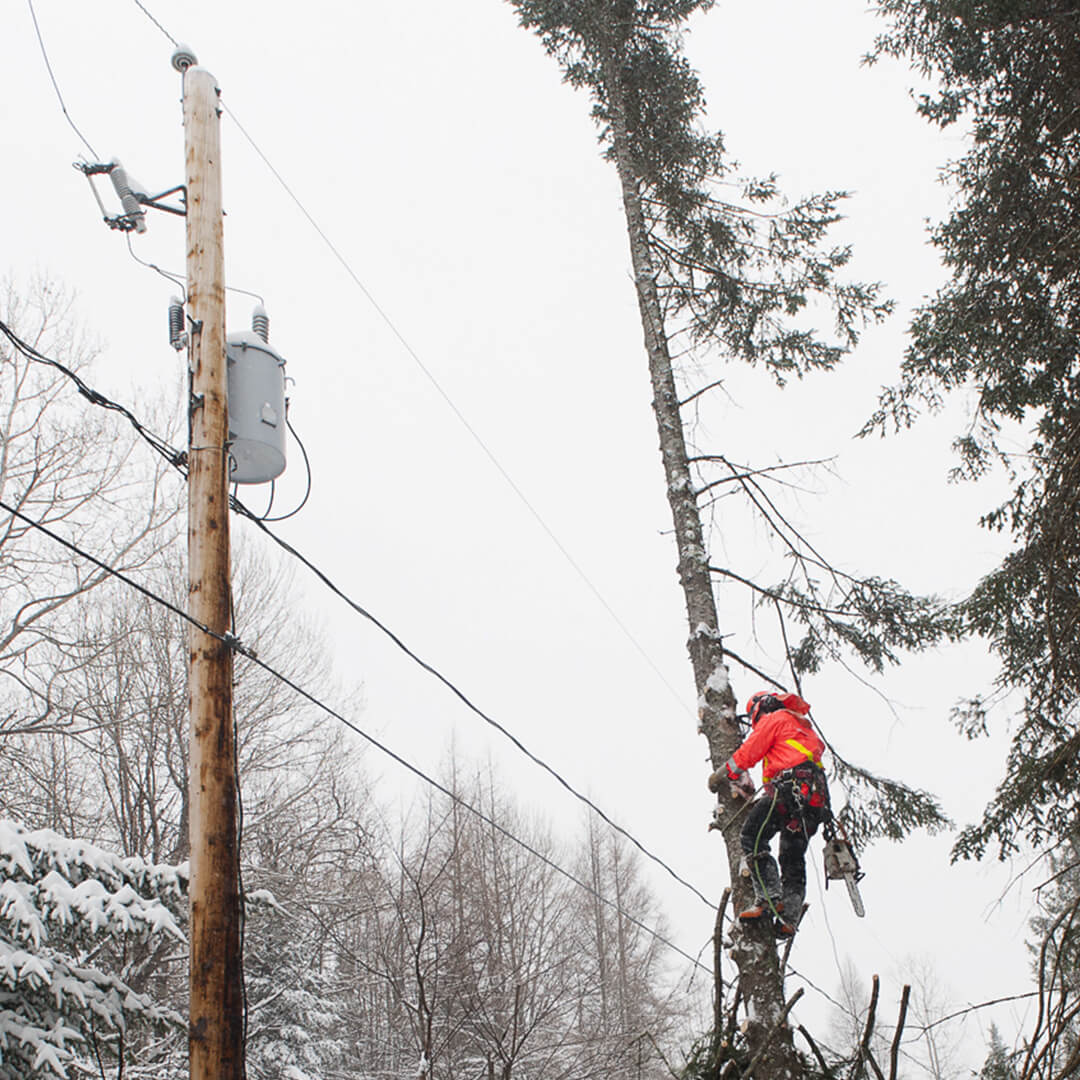Is debris collected or left where it is?
Debris can either be collected or left where it is, depending on the nature of the operation and the type of wood and tree.
Unscheduled operations
In the case of an accident or a weather event resulting in an outage, such as an ice storm, Hydro‑Québec will prune or cut down trees as needed to restore power promptly and secure the area.
Hydro‑Québec or a company it hires will carry out the work at no charge to the tree owner. The debris is always left on‑site.

Scheduled operations
When Hydro‑Québec plans vegetation control activities to maintain the power grid and prevent outages, the debris is handled in different ways, depending on the type of wood and tree.
-
Merchantable wood
The parts of trees that have commercial value (a diameter of more than 10 cm) are cut at different lengths and left on-site for the property owner to use as they wish. -
Ornamental trees
These are trees that are grown for aesthetic or practical reasons–for example, to serve as windbreaks or sound barriers. Their leaves and branches are chipped and sent to a recovery centre, at no cost to the owner. -
Non‑ornamental trees
Debris from non‑ornamental trees, usually found in natural (unlandscaped) environments, is left where it is. Trimmings are either spread over the ground or piled into small mounds. Work on this type of tree is carried out at no cost to the owner.

Disposal options for tree and branch debris
Owners are responsible for disposing of tree and branch debris, as would be the case if the trees had been damaged by wind gusts or freezing rain. Here are some appropriate disposal options.
-
Municipal waste collection
Several municipalities and boroughs offer a service to collect branches and green waste. You can dispose of your debris according to their collection procedures and schedules.
-
Eco‑centre
You can take your branch debris to the nearest eco‑centre so that it can be recycled in an ecological and sustainable way.
-
Fuel
Do you have a fireplace or wood stove? Use the debris as fuel. This is both a practical and an environmentally friendly option, provided you comply with the regulations in effect in your municipality.
-
Other resources
Some municipalities have partnerships with wood reclamation organizations or wood selling companies that can collect the debris for you–a win‑win solution!
Tree debris is good for biodiversity
Tree debris has a role to play in preserving biodiversity. Whether the trimmings are chipped or not, they can be scattered over the ground. As the debris decomposes, it enriches the soil with organic matter and contributes to the carbon cycle.
When piled into small mounds called windrows, debris provides a sustainable habitat for wildlife and invertebrates. Dead wood from large‑diameter trees promotes the germination of certain plant species and can help retain water and control erosion.
Learn about Hydro‑Québec's biodiversity strategy and initiatives






